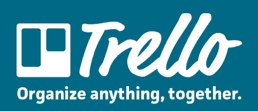There’s so much I want to blog about at the moment, but pretty much no time to do it. However, here’s a nice little thing we’re working on that might be of interest.
Performance management is one of those things that strikes fear into the heart of any public sector worker. Somehow, we’ve ended up building up processes, generating reports, all without much actual impact and little effect on the outcomes we want to be delivering.
Performance management is a part of the service I deliver, and Mark on my team who delivers this has been spending a ridiculous amount of time chasing colleagues across the organisation to get updates that he can copy and paste into reports, that then get printed for the senior leadership to not read, because they don’t have time.
There must be a better way!
One of the things that I love about the digital agenda is its realism. We deal with the reality of things, not what they would be like in an ideal world. In reality, nobody has time to read long performance reports, and nor do they have time to keep them updated. But it’s still really important to keep an eye on how various things are progressing.
So, what are we doing?
We started by shifting away from a document-centric approach. This is a recurring theme of a lot of my conversations at the moment and probably needs a post of its own to go into. It sounds obvious, but it’s the content of the documents that matter, not the documents themselves, and separating the two can have really transformative impact.
So, instead of a big document, we now have a Trello board. We have four main areas of performance measures to track, so each has a list on the board. Each commitment is a card on the board, and they are colour coded for easy identification: a simple traffic light style rating in terms of how they are progressing, plus a coloured label to identify which bits of the Councils they relate to.
Clicking on a card brings up a bit more detail – a list of the actions outstanding for that commitment, plus, if necessary, a little commentary on the latest that has been happening.
The purpose of this dashboard is to provide senior people (well, anyone really, but you know what I mean) with a quick overview of what is going on. Rather than dumping the detail on people by default, we give a high level perspective, which can then be dug down into greater detail if needed.
That detail is stored in Google Docs. Each commitment has its own Google Doc, with much more detailed implementation plans in them. They are linked to from inside the relevant Trello cards, allowing people to quickly access them.
Using Google Docs also means there is only one copy of these documents, and they don’t need to have someone copying and pasting information into them.
So, to summarise the benefits of this approach:
- No more big paper documents
- No more chasing of actions to be pasted into documents – it’s now up to individuals to update their Google Docs and Trello boards themselves
- More real time updates – no longer tied to a reporting cycle – if people have something to say, they add it when they have it, otherwise they don’t
- Much more manageable, in that we don’t have everything in a single document which is a pain to scroll through and find stuff
- Cross cutting issues which involve people in different directorates are now managed in a single place with no duplication
It’s also worth saying that this hasn’t cost us any money to do, and will help us to decommission a bit of software previously used for the purpose, which will save a few quid while providing a more useful service.
Importantly for me, it frees Mark up from a load of boring admin and means he can spend more time doing proper in-depth analysis of issues.
When we showed this to the folks at CLT (Council Leadership Team – the chief and four directors) they were delighted to move away from big document, paper based reporting and into something more real time. They now have the Trello board up on a big screen during a meeting, rather than looking down at bits of paper.
What’s also really pleasing is that this is a nice way of showing how simple, cheap digital technology can have quite a significant cultural impact within the organisation. Already many teams are using Trello to manage their work in a more visible, collaborative way.
Importantly though, when I was asked whether Trello was now the official way for people to manage work in the Councils, I answered no. It’s a way of doing it, but there are others out there that might be more appropriate depending on the work to be done. There isn’t a single solution.
We’re now working on the next stage of performance management and business intelligence in the Councils. It’s very early days, but we’re going to be trialling Tableau, which looks really cool. More on that soon.



